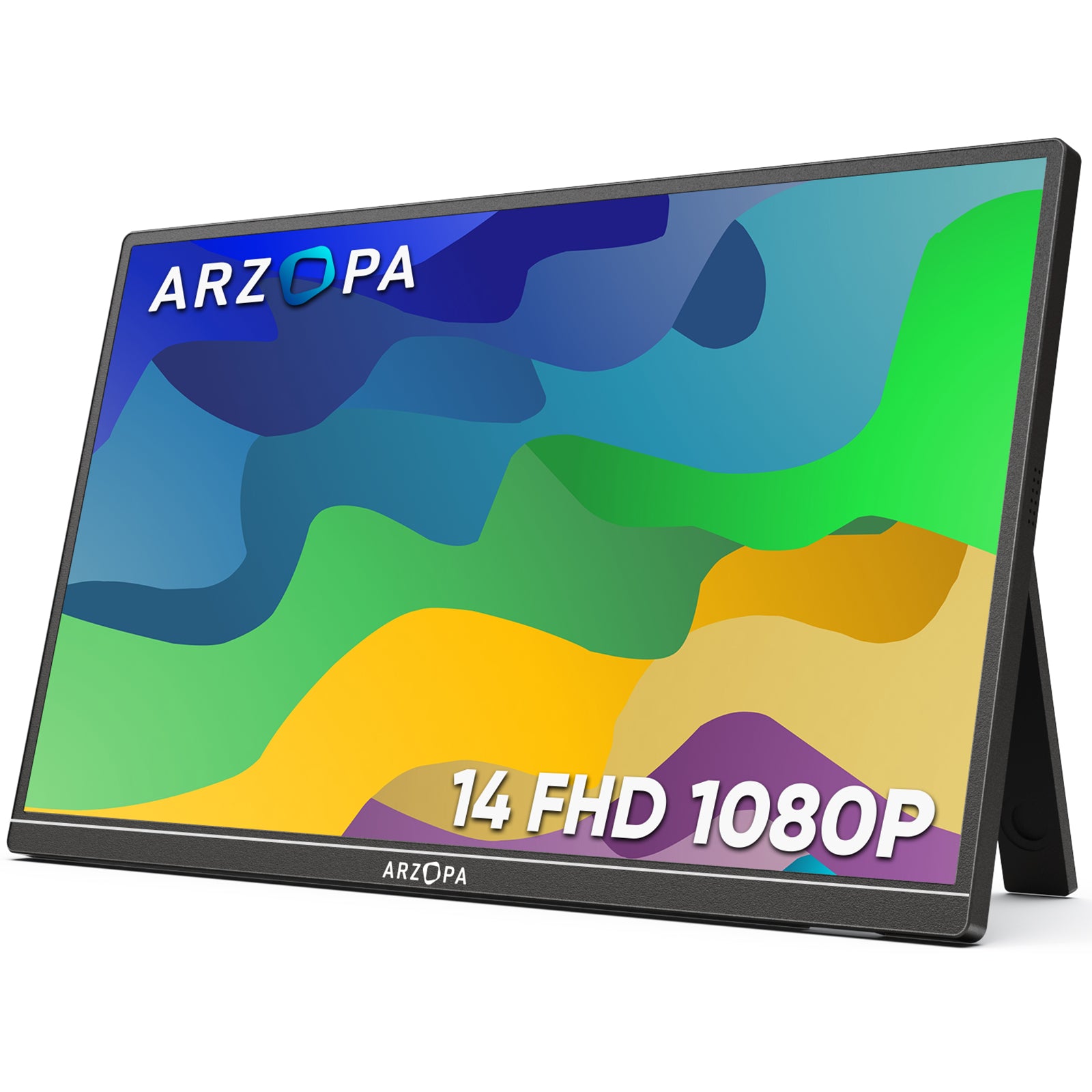Portable monitors differ from regular computer monitors primarily in size, portability, connectivity, power consumption, and display quality. These differences make portable monitors particularly suited for specific use cases, such as travel or limited workspace, while traditional monitors excel in performance and features for stationary setups.
Key Differences Between Portable and Regular Monitors
1. Size and Weight
- Portable Monitors: Typically range from 13 to 17 inches diagonally, designed for easy transport. They are lightweight, often weighing less than 2 pounds, making them convenient for users who need to work on the go.
- Regular Monitors: Usually larger, with sizes often exceeding 24 inches. They can be heavier and bulkier, requiring dedicated desk space.
If you are selecting a lightweight portable monitor, it recommended Arzopa A1S Ultra-Thin Portable Monitor, only 1.1 ponds in weight, which enables you to effortlessly place it in your backpack, thereby enabling you to commence your own visual extravaganza at any time and in any place. Whether on a hectic business trip or in a serene outdoor corner, the Arzopa A1S can be your constant companion.

Arzopa A1S Ultra-Thin Portable Monitor
- 14.0" Full HD 1920 x 1080 portable anti-glare IPS display with 60HZ resolution.
- Slim, Light & Portable,0.16 inches thick and 1.1 ponds in weight. easy to carry for business trip or travelling.
- Switch the screen view between horizontal and vertical modes for the perspective you prefer.
- Widely Compatible,be used with a laptop, a PC, a Mac, a smartphone, an Xbox, a PS5, a Switch, a Steam Deck, etc.
- Plug and Play,simply connect with one USB-C cable for video signal and power.
2. Portability
- Portable Monitors: As the name suggests, these monitors are built for mobility. They can easily fit into a laptop bag and are ideal for professionals who travel frequently or work remotely.
- Regular Monitors: Designed for stationary use in homes or offices, they lack the compact design that facilitates easy transport.

3. Connectivity Options
- Portable Monitors: Generally offer limited connectivity options. Most rely on USB-C or mini-HDMI connections, which may restrict compatibility with some devices. However, many portable models come with built-in speakers and multiple input options to enhance usability.
-
Regular Monitors: Feature a wider range of connectivity options including HDMI, DisplayPort, and VGA. This allows them to connect to various devices without compatibility issues.

4. Power Consumption
- Portable Monitors: More energy-efficient, often powered by a single USB-C cable that can draw power from a laptop or battery source. This is particularly advantageous for users with limited access to power outlets while traveling.
-
Regular Monitors: Typically consume more power due to larger screens and higher resolutions. This can be a consideration for users who are mindful of energy usage.

5. Display Quality
- Portable Monitors: While many modern portable monitors offer decent resolution (often up to Full HD), they may not match the color accuracy and brightness levels of traditional monitors. This can affect tasks that require precise color representation or high detail.
-
Regular Monitors: Generally provide superior display quality with better color accuracy, higher resolutions (including 4K options), and advanced features such as high refresh rates and adaptive sync technologies, making them suitable for gaming and professional graphic work.

6. Price Point
- Portable Monitors: Tend to be more expensive relative to their size and features compared to traditional monitors. Prices can range from around $100 to over $300 depending on specifications.
- Regular Monitors: Offer a broader range of prices based on size and features; they can be found for under $100 to several thousand dollars for high-end models.
Portable Monitors vs. Traditional Monitors: Use Cases
When to Choose a Portable Monitor
- Ideal for professionals who travel frequently.
- Useful for presentations in different locations.
- Great for limited workspace environments where desk space is at a premium.
When to Choose a Regular Monitor
- Best suited for home offices or gaming setups where space is not an issue.
- Preferred for tasks requiring high color accuracy or detailed graphics work.
- More appropriate for multi-monitor setups where larger screens enhance productivity.
Conclusion
Both portable and regular monitors have their distinct advantages depending on user needs. Portable monitors provide flexibility and convenience for mobile users, while traditional monitors offer superior performance for stationary setups. Understanding these differences can help users make informed decisions based on their specific requirements—whether they prioritize portability or display quality in their computing experience. We hope this comprehensive guide has given you some insights into choosing portable monitor or regular monitor. If you have any further questions or would like to share your experiences with these innovative devices, please leave a comment below. Don't forget to share this article with your friends and colleagues who may benefit from the information. Happy browsing!












